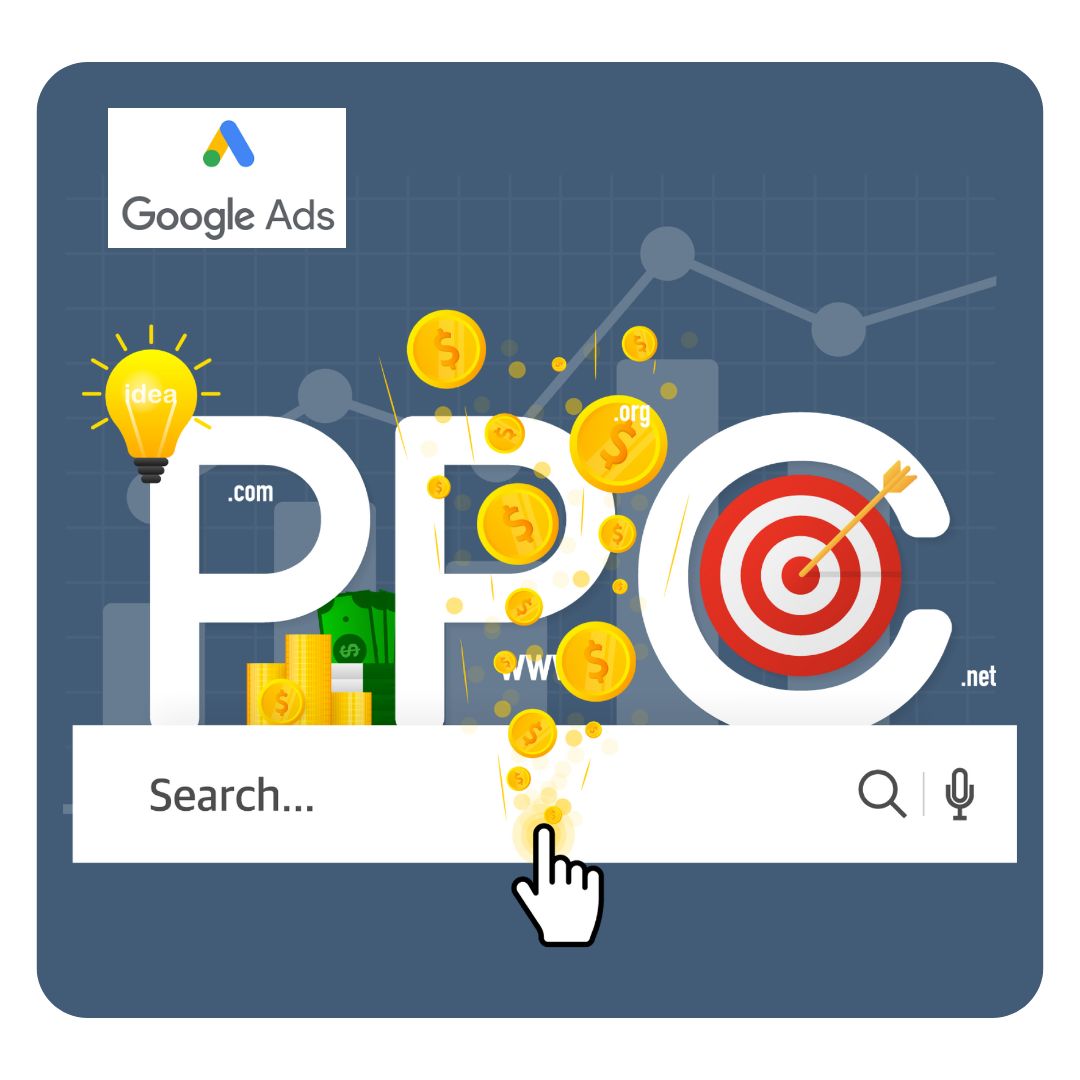HubSpot Website Grader
In 2024,86%of people will find your business online and if you're reading this, you already know how vital your website performance is!
17 min read
 Johanne
:
Jun 28, 2024 4:00:07 PM
Johanne
:
Jun 28, 2024 4:00:07 PM

There's a lot to consider when you're creating blogs that people will want to read and that will also help your visibility on line. From keyword research to getting the headlines right and keeping on top of on page SEO - such as internal links, backlinks and much more that you need to consider.
In this article we'll take a look at all of that, but first let's look at how we got here...
Let's set the scene with the harsh reality of lessons learned, aka the backstory...
A few years ago, we pivoted our business in reaction to the harsh economic conditions (investment money was drying up right around the world). We shifted our focus from preparing software and tech firms for investment to working with them to acquire new customers - focusing on lead generation and new business growth. At that time, we needed a thorough website overhaul to promote our new offers and our sales consulting services.
 We enlisted the help of an experienced marketing specialist to design a new website that would showcase our services, but unfortunately, the new website didn't meet our expectations.
We enlisted the help of an experienced marketing specialist to design a new website that would showcase our services, but unfortunately, the new website didn't meet our expectations.
The website's appearance and messaging were not aligned with our vision and to make matters worse, our website had no traffic!
Getting found online takes time. We knew that, so we waited and we waited some more. Google is really secretive when it comes to their inner workings but my spidey senses told me we had problems, and even if I didn't know what they were, I sensed time wouldn't change a thing.
Feeling despondent and discouraged, faced with a business that lacked online visability, I knew we had to make more changes, but I wasn't sure where to start.
Let's be clear, anyone who says you don't need Search Engine Optimisation (SEO) to drive traffic to your website is mistaken. Likewise, if someone tells you "it simply takes time and just wait, google will do its thing" and you will have traffic organically coming to your site - they are wrong!
I was searching for a solution to fix both the content and SEO issues. I had no idea where I could find the help I needed. Previous unsatisfactory encounters with SEO experts had left me unwilling to engage with yet another SEO professional who couldn't clearly outline the results they could achieve and the timeframe involved.
What I did have was a ton of motivation - determined to crack the SEO puzzle and revamp our website (again) to attract web traffic and generate leads. Of course I needed to needed to do more research but it wasn't that simple.
After months and months of deep SEO research, taking courses and learning from others in community forums who had success with boosting their web traffic, I finally figured out the critical steps to SEO that would make an impact. I wouldn't have to rely on luck or cross my fingers with the Google gods!
Here's what I did next.
Keep reading to find out how to get top of page results like ours
 Source: Google Search Page Results [Screenshot]
Source: Google Search Page Results [Screenshot]
I made it my mission to unravel the mystery surrounding SEO. I put everything I learned into practice and soon our website's Google rankings improved. Let me explain what really made the difference...
 Google dominates online search. In January 2025, Google had 93.25% of the UK search engine market share and over 89% globally!
Google dominates online search. In January 2025, Google had 93.25% of the UK search engine market share and over 89% globally!
Obviously getting a handle on how Google really works is a big part of being successful with your SEO endeavours.
Google's approach is basically to be successful in their mission to organise all the information in the world (online).
With hundreds of thousands of blog posts published daily, Google must analyse and rank them to enhance the search experience for users. Viewing Google as a content database, it takes time for content to surface to viewers; hence the popular saying "SEO takes time."
Typically, it can take 3-6 months before content begins to rank. Google intentionally holds back content in its database to ensure a stable search experience and avoid volatility in search results.
However, if you don't have all your SEO tasks done (offpage, onpage and technical SEO) as well as high quality helpful content - your website will never get visibility with the users searching for your products and services no matter how long you wait!
The period of waiting for your website to gain traction is often referred to as the "sandbox effect." While Google doesn't explicitly mention this term, it's a common experience for new websites.
Simply creating a new site with SEO-optimised content won't guarantee instant rankings. Consistent content creation over months is key to transitioning out of this sandbox phase and getting your articles crawled and indexed promptly. This process ties back to the concept of volatility.

Once your website emerges from the sandbox, the ranking of your articles will be influenced by various factors. The most critical aspect is ensuring that your content meets the search intent and provides searchers with the information they seek.
Ultimately, Google's primary goal is to provide accurate and timely answers to user queries. As a result, your content should strive to satisfy the user's search journey.
Ending the search journey is Google’s subjective way of determining whether a blog post is good or bad for its users. Great content is subjective, so Google has to develop user signals to determine what's considered "good."
Great content is subjective, so Google has to come up with user signals to know what's considered "good."
For example, if I want to know what the buyers pyramid is, the first link I click on should tell me exactly that.
The first article should be so informative that I either click on outbound links in the article, spend a lot of time on the article, or browse around on the website that posted the article to learn more about it.
This tells Google that I found what I was looking for.
However, if I open the first article and then leave the page and select another article, Google receives a signal that the initial article did not meet my expectations - leading to a potential re-evaluation of its ranking. Google may consider whether a different article should be prioritised for the top spot.
Moving between articles, also known as pogo sticking, can negatively impact a blog post's performance compared to others. Therefore, it is crucial to conclude the search journey effectively. Your blog post should offer in-depth information on the targeted keyword, encouraging readers to take action after reading.
The aim is for individuals to search for a topic, click on your article, and find all the necessary information without seeking additional resources. That means learning how to write in a way that helps Google grasp the relevance of your content.
Online search is time consuming for both the buyers and online businesses. Obviously you'll want make it easier for your potential buyer to find information on your products and services online. To be successful in having your web pages displayed higher in Google search results its essential to fully understand what the Google Ranking Factors are and adapt your strategy to align with these ranking factors.
Mastering Google's ranking factors is essential for boosting your website's Google ranking. Google employs a sophisticated algorithm to assess a website's content's relevance and quality. By grasping these factors, you can optimise your blog content to align with Google's standards.
Key ranking factors include website speed, mobile-friendliness, user experience, content relevance, backlinks, and social signals. When crafting your blog content, it's crucial to consider these factors to ensure it aligns with Google's criteria.
By keeping abreast of Google's algorithm updates and comprehending the ranking factors, you can fine-tune your blog content to enhance your website's Google ranking. There are clear ranking factors that Google’s robots use in their algorithm to rank pieces of content accordingly.

Mastering your SEO strategy through keyword research is crucial. If you can't pinpoint the search queries your site can compete for, you will struggle to get anywhere.
Understanding keyword research involves recognising that Google tends to favour authoritative websites. An authoritative website is determined by factors such as domain authority, relevance to the topic, the quality of the content, and the number of backlinks.
Although it's tempting to jump straight into creating your blog, make a habit of starting with keyword research.
Keyword research and optimisation are essential for improving your website's Google ranking. By conducting thorough keyword research, you can identify the keywords and phrases that your target audience is searching for. You’ll need a keyword research tool for this. There are lots of tools to choose from. Two of the top-rated are Semrush and Ahrefs. Both of these are expensive.
You can opt to subscribe to one of the other cheaper options but they are just not as good. It really is a case of you get what you pay for. So choose one you want depending on your budget, If you are leaning towards Semrush, you can trial it for for for 7 days before you need to purchase.
Have a look at this video by Sam Oh, VP of Marketing and Head of Video Content at Ahrefs. Sam gives us a great overview of keyword research in his video, check it out.
Each website's keyword research is different because it hinges on how your site stacks up against competitors on Google's first page. There are ways to do keyword research that can help uncover some low competition keywords to go after first. You can also narrow down your search for keywords with modifiers such as how, what, why, top, best etc.
You might find there are some industries (such as the tech industry) where most of the keywords have really high Keyword Difficulty - even after narrowing down your results. In these cases, you need to take a more creative approach to keyword research. There are a few different ways to uncover keywords that could work for you in those situations. The trick is to use other sources. Try Quora or Reddit. Numerous websites have been highlighted on these platforms, with many already conducting thorough keyword research.
It's possible to identify low-authority sites that rank well in various topics and leverage their success. Narrow it down even more to find extremely low-competition keywords. You can do this by adjusting the keyword difficulty of the keywords you want to see.
Search intent is a crucial part to get right. If you get this wrong, your blog post will never appear on the first page of Google.
here are four main types of search intent:
In some cases, it might be easy to assume the search intent for a keyword. For example, you might assume that a search for “how to create an SEO strategy” is informational in intent. But you don’t have to guess there are plenty of tools to show search intent such as Keyword Overview and Keyword Magic Tool. For any keyword, look for the “Intent” section.
Using additional related terms alongside a single keyword can provide a more comprehensive understanding of the topic for both readers and search engines. In other words, incorporate semantic keywords. These are terms and phrases that add extra context to the content and help search engines understand what it’s about.
Like all keyword research tactics, it's essential to consider what Google prefers. Analyse the content displayed on the first page of Google for a particular keyword and strive to enhance it. Approach the article by observing what Google prioritises in the top results.
Once you have identified relevant low competition keywords and figured out what the intent should be, you can optimise your blog content by incorporating these keywords naturally.
However, it is important to avoid keyword stuffing. Google penalises websites that engage in this practice, and it can make the flow of your article awkward and unnatural, which can detract from the reader's experience.
Not only should you include keywords in your blog posts, but you should also prioritise producing top-notch, informative content that adds value for your readers (that is aligned to your keywords). This approach will not only boost your website's Google ranking but also draw in organic traffic.
Google gives us an insight into their ranking with their E-A-T model and latterly they updated this to add an extra “E” to the search quality standards of E-A-T to ensure content is helpful and relevant.
The extra “E” stands for “experience” and precedes the original E-A-T concept – expertise, authoritativeness and trustworthiness.
E-A-T is a template for how we rate an individual site. We do it to every single query and every single result. It’s pervasive throughout every single thing we do | Hyung-Jin Kim, VP of Search at Google,
To achieve a high ranking in Google's search results, your content strategy must showcase E-E-A-T
SEO plays a crucial role in fulfilling the requirements to achieve E-E-A-T standards, but what exactly does this entail, and how can you demonstrate experience, expertise, authoritativeness, and trustworthiness?
The positive aspect is that most diligent website administrators, SEOs and marketing teams are already taking the necessary steps to cultivate E-E-A-T.
Taking this into account, Stanford Persuasive Technology Lab compiled 10 guidelines for building web credibility based on three-year research with over 4,500 participants.
– Stanford Web Credibility Research
- Make it easy to verify the accuracy of the information on your site.
- Show that there’s a real organisation behind your site.
- Highlight the expertise in your organisation and in the content and services you provide.
- Show that honest and trustworthy people stand behind your site.
- Make it easy to contact you.
- Design your site so it looks professional (or is appropriate for your purpose).
- Make your site easy to use – and useful.
- Update your site’s content often (at least show it’s been reviewed recently).
- Use restraint with any promotional content (e.g., ads, offers).
- Avoid errors of all types, no matter how small they seem.
The focus on experience should be interpreted as a focus on establishing trust. Experience is a core differentiator between human and AI-written content. You can showcase your experience by sharing the faces behind your website. This statement lines up with Stanford’s web credibility guidelines to:
Keep these elements in mind when you are creating content to be sure to meet the new standards for getting seen and being visible in Google search results.
Having a well-defined outline is a big part of a successful blog. The more detailed your outline, the easier it will be to create content. Creating an outline entails structuring your headings carefully to guarantee that you cover the essential information needed by Google.
For standard blog posts, this template gives you an example of the structure.
When creating your blog content, ensure it is well-researched, accurate, and engaging. Use a variety of media, such as images and videos, to enhance the user experience. Not only images break up blocks of text, but they also convey information more efficiently. In other words, they improve the structure. It's important to make sure your content is well structured so its easy to read.
Use your keyword in the title and heading of your article. Consider your audience and what might entice them to click on your blog - you want a title that sounds interesting maybe even intriguing so you can achieve a high CTR (Click Through Rate) and people choose your article over other options. Without enticing someone to click on your blog post, you won't have anyone reading it.
Encourage comments and feedback on your blog posts to spark interaction with your readers. Make it effortless for them to share your content on social media platforms by including social sharing buttons. Building a sense of community and fostering brand loyalty and credibility is key when engaging with your audience.
Once you have your outline, it’s time to start writing your blog. To get the most out of your blog post, you want to make sure your blog post uses the keywords you have carefully researched. Be careful with how you use the keywords as you want to avoid keyword stuffing - over using your keywords isn't something that Google supports and your audience won't appreciate it either.
Make sure your blog post includes your target keyword a few times in the article and in the titles and also variations of the target keyword.
Once you have your article written, it is time to add the links. Utilising internal and external links within your blog content can greatly enhance your website's Google ranking. All types of links need anchor text, which is the clickable hyperlinked text in a link. This helps both users and search engines comprehend the context of the link.
Example: We provide B2B companies with sales consulting services , shows "sales consulting services" as the anchor text, which links to our website page - sales-consultancy-services

Internal links assist Google in understanding your website's structure and navigating through your content effectively. When incorporating internal links, ensure to use descriptive anchor text that accurately reflects the content of the linked page.
Using external links can boost your website's credibility and authority. Ensuring that your external links are reliable and relevant will enhance the value of your blog content and offer additional resources to your readers. It is crucial to verify that these external links are pertinent and trustworthy, as linking to low-quality websites could negatively impact your website's Google ranking.
Interlinking or internal links are links to other pages on your website. When you publish a new blog, remember to create links to other blogs and pages on your site with relevant anchor text.
Ensure that every page on your website has links to several other pages. By incorporating internal links in your new blog posts and directing readers to previously written articles, you can demonstrate your expertise and topical authority to Google. You want to avoid "orphan pages"—pages with no links to guide users and search engines to them.
Internal links example: What is the Buyers Pyramid blog page

In our example we link to other posts on our website related to the Buyers Pyramid. Aim to link to a minimum of two other relevant posts or other relevant pages on your website. If possible try to get about six links per blog. You also want a healthy amount of external links in your article - links pointing to other pages on different websites.
Yes, SEO lays the foundation, but results take a long time...
Accelerate your online growth with targeted advertising that puts your brand in front of the right audience, right now. Explore our ad services below and start seeing impact much faster.
Once your article is live, there are a few additional steps to take.
After publishing your article, it's important to ensure that other blog posts on your website link to it. Developing a habit of interlinking can be really helpful in this regard.
Next, it's a good practice to confirm that your new blog post is included in your website's sitemap. The process may vary depending on the platform you're using. For instance, if you're on HubSpot, there's no need to worry as HubSpot automatically updates your sitemap with new pages. However, some other CMS platforms may require manual updating each time (no thanks).
If you post high quality blogs articles frequently, you can see results fairly quickly, if not then it will likely take around three months at which time you can assess your progress. If you’re ranking in the top five, well done!
If your ranking is lower it could mean you went after a competitive keyword which is probably quite hard to rank for. Competitive keywords will need backlinks, links from other websites, to help get them higher in google search results.
 A backlink is a link from another website that points to yours. It’s one of the strongest ranking signals for Google. Google won’t always know how good your content is. But if other websites are linking to your blog post, Google can assume there’s something good about your blog post.
A backlink is a link from another website that points to yours. It’s one of the strongest ranking signals for Google. Google won’t always know how good your content is. But if other websites are linking to your blog post, Google can assume there’s something good about your blog post.
If you're anything like me, you may find yourself dodging backlinks and that's because getting backlinks is hard. It can be quite the challenge, especially if you have a new website with a lower domain authority that others may not want to link to.
More often than not, backlinks are not within your control, which is why it makes sense to cover off everything else (that is within your control) first.
There are many ways to get backlinks, one popular one is guest blog posts. Once you have a top ranking article, it’s likely that it will lead to backlinks.
Another option is to register your website on suitable industry specific directories and business associations. Local businesses have other options like being listed with the Local Chamber of Commerce etc.
Another option is to search for unlinked mentions. Utilise tools to discover websites that reference your website, brand, or products. The objective is to identify any websites that mention your brand or product without providing a direct link. If you come across a mention that lacks a link to your website, reach out to the website owner and kindly request them to include a link along with the mention of your brand or product.
Whatever backlink strategy you put in place, it's important to be consistent with it and to keep growing the number of backlinks for your site as you can never have too many quality backlinks.
 You need to ensure you have a few key technical elements in place to enhance user experience and provide Google with more information.
You need to ensure you have a few key technical elements in place to enhance user experience and provide Google with more information.
To improve your user's experience, you want to make sure that your blog page template is clean and easy to navigate (my blog template is actually CLEAN so I guess I'm on the right track 😂)
Your priority is responsiveness. Your article should look great on desktop, tablet and mobile devices. It should load quickly and have appropriate navigation for different devices. Most website building tools typically handle this automatically, and chances are, it's already responsive.
Next, when you add images to blog posts, you want to make sure that the file sizes are JPG files under 100kb. You can search for image compression tools in Google and find a tool that does this for you.
An even better option with even better compression and quality is webp files - a contemporary image format for use on websites. It's perfect for your site's images and your blog article images as the image sizes are so compact yet retain high quality. You can find file conversion options online. Some even have a limited number of free conversions on offer.
Before adding an image to your Content Management System (CMS), make sure the file name is relevant to your blog topic. Don't include images that have file names that are letters and numbers that don't make any sense.. You also want to check each image has ALT text.
This is a description of the image and is used by page reading devices (mostly used by those who are visually impaired) and should improve the user experience.
Finally, it's important to regularly monitor your website for broken links. There are plenty of free tools available to help you run these tests and it's definitely worth the effort, as broken links can harm your Google rankings.
And with all that done, we have covered all the basics of using content to improve your Google rankings.
It's now time for you to have a go and see how you get on!
If you'd like some help, don't hesitate to get in touch.
And, if you're thinking how does this fit with other strategies to grow your business, visit our blog posts to learn more.
Google very recently unveiled a cutting-edge feature aimed at providing swift answers for when you don't have time to deep dive into a specific topic, introducing Google's AI Overview.
when you don’t have time to piece together all the information you need. Google Search will do the work for you with AI Overviews.
In the near future, you will have the ability to customise your AI Overview by simplifying the language or delving into more detailed explanations. This feature can be especially beneficial for those new to a subject.
What's vitally important about this feature is the AI overview sits at the very top of the Google Search Results Page! This means it now crucial to understand what AI can glean from your content and optimise that to improve your ability to be highlighted in the AI Overview.
And yes, it is possible to capture that coveted top spot - we've done it with this blog article you are reading!! We're listed above a paid Semrush link! Check out the screen shot below...

Use the AI Search Grader from HubSpot and assess how visible your brand is in AI-powered search engines. Identify areas where you are doing well and where you can improve to increase brand awareness and sentiment.
It's free, why not check try it out?
Knowing why you want to blog and the messages you want to convey are important precursors to blog writing.
Keyword research is another important step in preparing for your blog.
These points, coupled with a clear view of the intended audience, form the basis of the blog.
Yes, you can and should use AI tools to generate blog posts, but only to create your rough drafts.
Remember 'prompt engineering' is crucial to getting a good first draft from AI tools.
AI tools often use terminology that doesn't reflect your 'brand voice,' so this needs adjustment as well as all the steps we have outlined in this blog.
HubSpot has a AI assistant that can create an outline for your blog and can generate blog content. Its a good as far as first draft goes but you need to include your research, your brand voice and your own insights to make it better before you consider publishing it.
Depending on the topic, graphics and length of the article each blog can take between 8 and 16 hours to produce.
AI can reduce this by up to 40% but AI does not produce links, images or videos to include in your article.
Logically, the better the organic search results, the less advertising is needed to generate impressions and clicks.
Interested to find out how Content Hub could improve your website traffic?

The Power of Personalised Content
How can a CRM help my business grow?

In 2024,86%of people will find your business online and if you're reading this, you already know how vital your website performance is!

Improved Search Engine rankings let buyers easily find your business on their journey. Unlock the power of SEO optimisation in HubSpot Content Hub to...

Uncover the nitty-gritty of Google Ads with our easy-to-follow guide